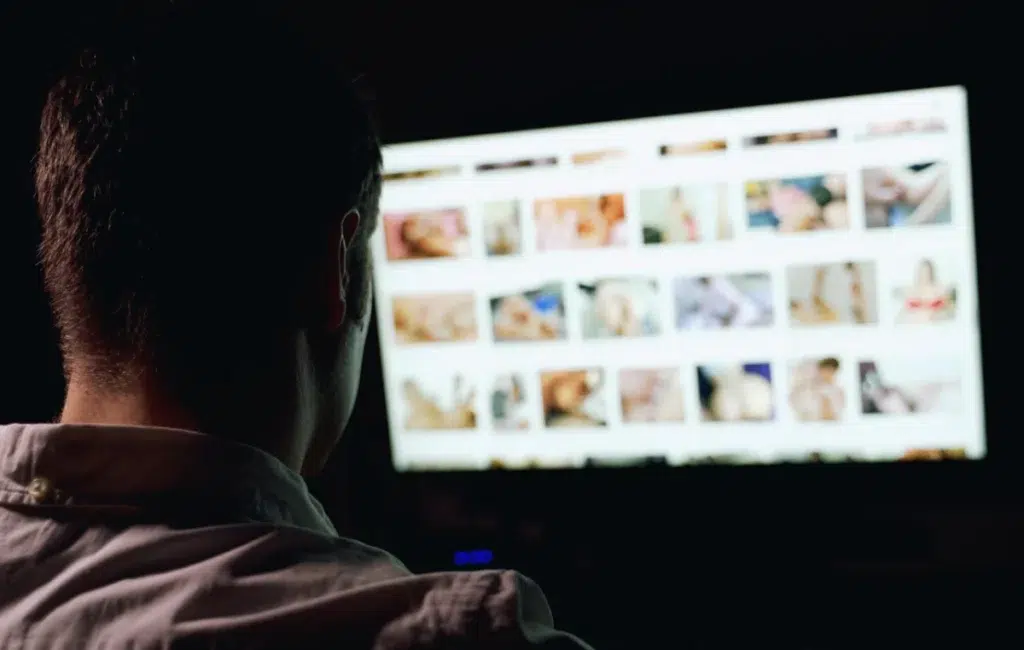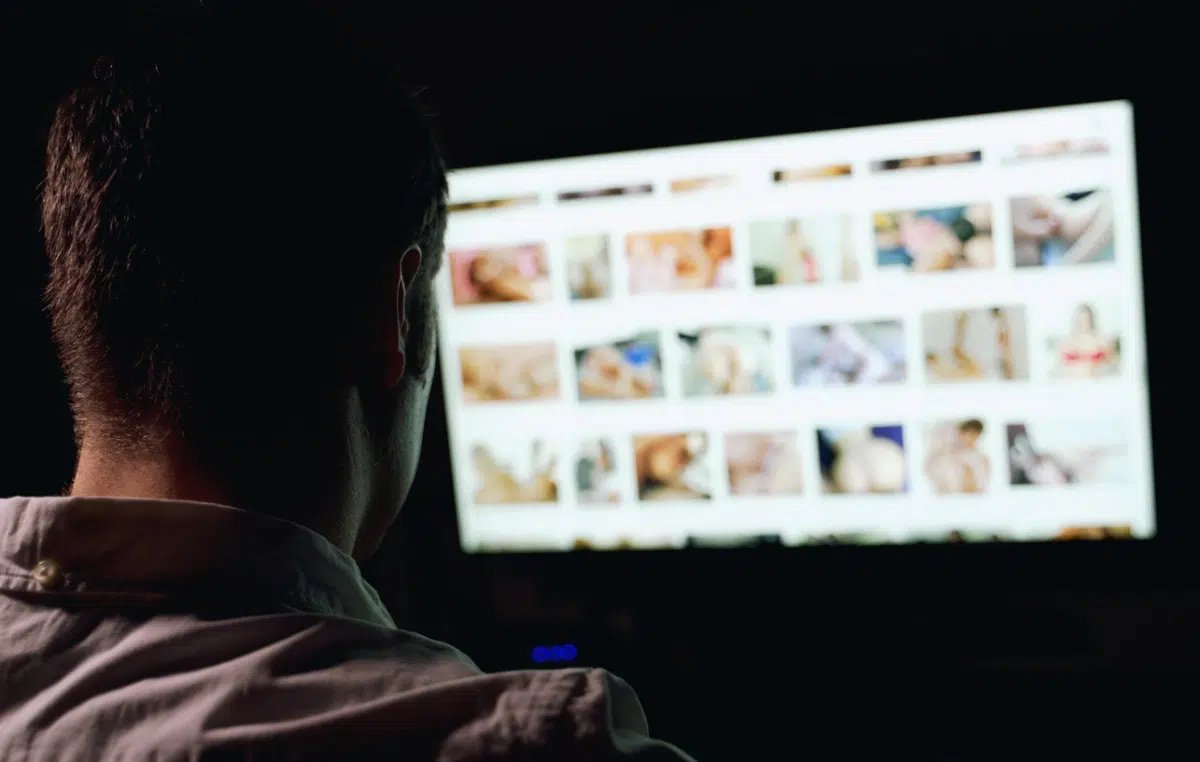
The Growing Threat of AI-Generated Child Pornography
Artificial intelligence (AI) technology is advancing at a remarkable pace. AI has become so advanced that it can produce highly realistic depictions of child pornography, also called child sexual abuse material (CSAM), without involving actual children.
Despite these images being generated by computers, they can still show illegal, disturbing sexual conduct involving minors. Indiana legislators and prosecutors treat AI-created CSAM as a type of child exploitation because of the potential to normalize sexual abuse and damage minors psychologically.
In Indiana and all states, criminal punishments for producing, distributing, or possessing AI-generated child pornography are severe and increasing. AI generated child porn is a growing problem and prosecutors are pursuing serious felony charges against defendants throughout the country.
This post explains how state and federal laws apply to child sexual abuse material created by artificial intelligence. Speak to our experienced AI generated child porn defense attorney at Gemma & Karimi at (317) 602-5970 if you have been charged with a crime.
How the Law Defines Child Pornography in Indiana and Federally
The legal definitions of child pornography or CSAM in Indiana and under federal law are critical for understanding the scope of what is illegal, especially in the context of emerging technologies like AI-generated child porn content. These definitions outline what constitutes illegal material, the types of activities criminalized, and the associated penalties.
Indiana CSAM Definition
CSAM is defined under Indiana Code 35-42-4-4, the statute governing child exploitation and possession of child pornography. The law prohibits the creation, dissemination, exhibition, or possession with intent to disseminate material that depicts “sexual conduct” by a child under 18 years of age, or someone who appears to be under 18, in a manner that is “obscene” or “lacks serious literary, artistic, political, or scientific value.”
“Sexual explicit conduct” includes intercourse, sexual contact, or exhibition of genitals for sexual arousal. The statute explicitly includes “any picture, computer-generated image, or other pictorial representation” in its definition of a “child sexual abuse image,” suggesting that AI-generated or virtual images could fall under this law if they meet the criteria.
For example, possession of such material is a Level 6 felony. With 6 months to 2.5 years in prison and a fine of up to $10,000, while dissemination or production escalates to a Level 5 or 4 felony, with a sentence of one to seven years and a fine of up to $10,000. Indiana’s broad definition aims to capture both real and computer-generated depictions. However, ambiguities in the law regarding purely virtual images persist, prompting ongoing legislative discussions that are expected to continue in 2025.
Federal Definition of CSAM
Under federal law, CSAM is defined in 18 U.S.C. § 2256, part of the Child Protection and Obscenity Enforcement Act of 1977. It encompasses any “visual depiction,” including photographs, videos, or “data stored on computer disk or by electronic means,” that depicts a minor (under 18) engaging in “sexually explicit conduct.”
This includes actual or simulated sexual intercourse, bestiality, masturbation, sadistic or masochistic abuse, or lascivious exhibition of genitals. Importantly, federal law covers “computer-generated images” that are “indistinguishable” from depictions of real minors or involve real minors whose images have been altered.
Federal penalties are severe: production carries a potential sentence of up to 30 years in prison, distribution carries a potential sentence of up to 20 years, with a 5-year mandatory minimum, and possession carries a potential sentence of up to 7 years. Federal law applies in Indiana and often guides state prosecutions involving interstate or online activities.
State and Federal CSAM Laws and AI-Generated Content
Both Indiana and federal laws address computer-generated images, but their application to AI-generated child sexual abuse material is evolving. Indiana’s inclusion of “computer-generated images” in state law suggests that AI-generated depictions of minors in sexual conduct could be prosecuted, particularly if they appear realistic or use real minors’ likenesses.
However, the lack of mention of AI has led to calls for legislative updates, as mentioned in Indiana’s 2023 interim study committee, to clarify coverage of 100% virtual images. Federal law explicitly includes AI-generated or altered images that are “indistinguishable” from real minors. Therefore, AI-generated CSAM is illegal federally if it meets this threshold; however, purely fictional depictions may avoid federal prosecution unless they are deemed obscene.
Overall, state and federal prosecutors don’t need to prove that a real minor was involved to file charges for child sexual abuse or child pornography.
Federal and Indiana Laws That Apply to AI-Generated CSAM
The legal landscape surrounding AI-generated child sexual abuse material (CSAM), often referred to as child pornography, is complex, with both federal and Indiana laws addressing this issue through statutes that cover computer-generated images. These laws aim to protect minors from exploitation while navigating the challenges posed by emerging technologies like artificial intelligence.
Federal Child Protection and Obscenity Enforcement Act
Under federal law, AI-generated CSAM is governed by the Child Protection and Obscenity Enforcement Act, as stated in 18 U.S.C. § 2251 et seq.
The definition of CSAM, found in 18 U.S.C. § 2256(8), includes any “visual depiction” of a minor (under 18) engaging in “sexually explicit conduct,” such as sexual intercourse, masturbation, or lascivious exhibition of genitals. This definition explicitly includes “computer-generated images” that are “indistinguishable” from depictions of real minors or involve altered images of identifiable minors.
Indiana Laws on AI-Generated CSAM
In Indiana, AI-generated CSAM is addressed under Indiana Code 35-42-4-4, the state’s child exploitation and possession of child pornography statute. This law prohibits the creation, dissemination, exhibition, or possession with intent to disseminate material depicting “sexual conduct” by a child under 18, or someone who appears to be under 18, in a manner that is “obscene” or lacks serious value.
“Sexual conduct” includes explicit acts like intercourse or genital exhibition for arousal. Critically, the statute defines a “child sexual abuse image” to include “any picture, computer-generated image, or other pictorial representation,” explicitly covering AI-generated content that depicts apparent minors in sexual conduct. Possession or dissemination of AI-generated child pornography is illegal, no matter how it was created.
Penalties for AI-based child pornography can include years in federal prison, sex offender registration, and harsh restrictions on housing and employment.
How AI Technology Is Used to Create Illegal Child Pornography
AI can be used in the following ways to create illegal sexual content:
AI-Generated CSAM and Deepfake Technology for Child Pornography
AI technologies, particularly generative AI models like deepfakes and text-to-image systems, are used to create illegal CSAM by producing realistic images or videos depicting minors in sexually explicit scenarios. Deepfake algorithms, powered by generative adversarial networks (GANs), manipulate existing photos or videos to superimpose faces or bodies onto explicit content, often making the output appear authentic.
For example, an AI model can take a benign photo of a minor and alter it to depict sexual conduct, or generate entirely fictional characters that appear underage. Tools like Stable Diffusion or DALL·E, if misused, can create such content from text prompts (e.g., “image of a minor in explicit pose”).
These products may be “indistinguishable” from authentic child sexual abuse images, as defined by federal law (18 U.S.C. § 2256), or meet Indiana’s broader definition of “computer-generated images” under IC 35-42-4-4, making them illegal. The accessibility of open-source AI models has lowered the barrier for malicious actors, increasing the risk.
Synthetic Content Creation and Data Training for Child Sexual Abuse Images
AI systems create illegal content by leveraging large datasets to train models on visual patterns, which are then fine-tuned for specific outputs. For CSAM, perpetrators may use publicly available images of minors (e.g., from social media) to train AI models, customizing them to generate explicit depictions.
Also, AI-generated child CSAM is produced without authentic images, relying on AI’s ability to generate lifelike visuals from scratch based on learned characteristics of human anatomy and behavior. These models can be accessed via dark web platforms or modified open-source tools, bypassing ethical safeguards built into commercial AI systems.
In Indiana, where CSAM laws cover any “computer-generated image” appearing to depict a minor, such AI-generated child content is prosecutable. However, federal law requires it to be “indistinguishable” or obscene, creating enforcement challenges.
Distribution and Accessibility Issues for AI-Generated Child Content
AI-generated CSAM is often distributed through encrypted platforms, social media, or peer-to-peer networks, complicating detection. AI tools can also automate mass production, enabling rapid dissemination of illegal content.
For instance, chatbots or AI-driven forums on the dark web may generate and share CSAM on demand. The anonymity of dark web platforms, combined with AI’s ability to create content that avoids traditional detection methods, makes criminal enforcement difficult. Federal agencies, such as the FBI and Indiana’s Internet Crimes Against Children Task Force, utilize AI-based detection tools to identify this type of content. But the volume and sophistication of AI-generated CSAM strain resources. This highlights the importance of businesses implementing proactive measures to prevent hosting such material.
Keep in mind that even avatar or cartoon-based AI images of minor children are likely illegal under current state and federal law. Some sex offenders might argue that the AI material is fictional, but prosecutors argue otherwise and may counter this contention with a forensic expert. Police agencies also utilize AI and machine learning to identify and track illegal AI-generated child sexual abuse material (CSAM) online.
Defending Against AI-Generated Child Pornography Charges
If you’re facing an AI-generated child pornography charge in Indiana, you cannot claim innocence because no actual children were used in the images. However, an experienced sexual abuse criminal defense lawyer can build various robust defenses to these grave charges.
First, Indiana’s current child pornography statute criminalizes the possession, creation, or distribution of sexually explicit images or videos depicting minors under 18, including computer-generated images, but does not mention AI-generated child content. An experienced Indiana federal criminal defense attorney may challenge the admissibility of AI-generated evidence, given the current state of Indiana and federal law.
Since AI-generated child images may not depict real children, your defense attorney could argue that the material does not meet the legal definition of child sexual abuse material under current Indiana law, drawing on precedents like the U.S. Supreme Court’s 2002 ruling in Ashcroft v. Free Speech Coalition, which struck down prohibitions on computer-generated child pornography that did not involve real minors.
Other possible defenses for AI-generated child porn charges may include:
Unawareness or Lack of Intent
To secure a conviction under Indiana’s child pornography laws, prosecutors must prove that the defendant intentionally created, shared, possessed, or viewed child sexual abuse material. A viable defense may involve demonstrating that you did not know the material was child sexual abuse material. For instance, if the material was accessed unintentionally, was part of incidental exposure, or if you reasonably believed the individuals depicted were adults, these arguments could challenge the prosecution’s case. Such defenses rely on establishing a lack of criminal intent or knowledge.
No Interstate or Federal Nexus
Federal prosecution of child pornography, including AI-generated CSAM, typically requires evidence that the offense involved interstate commerce, such as using the internet, federal mail, or crossing state lines. If the alleged activity occurred entirely within Indiana and did not involve federal jurisdictions, your Indiana defense attorney could argue that the case falls under state jurisdiction rather than federal. This distinction is critical, as Indiana state penalties, although severe, may be less stringent than federal penalties, which can carry a maximum sentence of up to 20 years for distribution or production of AI generated child porn.
Expert testimony from digital imaging or AI specialists can be critical in demonstrating that the images were artificially created, potentially reducing the severity of charges or leading to dismissal if the prosecution cannot prove the involvement of real victims. Additionally, defenses such as lack of intent, involuntary possession, or entrapment may be viable in your situation, particularly in cases involving sting operations.
State and federal courts continue to adapt to AI-driven criminal prosecutions, so it’s essential to retain a skilled criminal defense attorney as early as possible in your case.
Facing AI-CSAM Charges in Indiana Requires Immediate Legal Help
AI-generated child sexual abuse material is relatively new, and laws are evolving. However, this type of CSAM is being aggressively prosecuted at both the state and federal levels, even when no actual child was harmed. The Indiana legal system treats AI-created sexually explicit images with the same harshness as traditional, authentic child sexual abuse material.
Convictions can lead to federal prison, sex offender registration in Indiana, and a lifelong impact on the defendant’s freedom and reputation. Indiana prosecutors often pursue these cases aggressively, and delays can limit defense options.
Gemma & Karimi offer aggressive, experienced defense in high-stakes criminal allegations in Indiana, including child sexual abuse, child pornography, and child sexual abuse material. If you’re being investigated or facing criminal charges, contact Gemma & Karimi immediately at (317) 602-5970.



